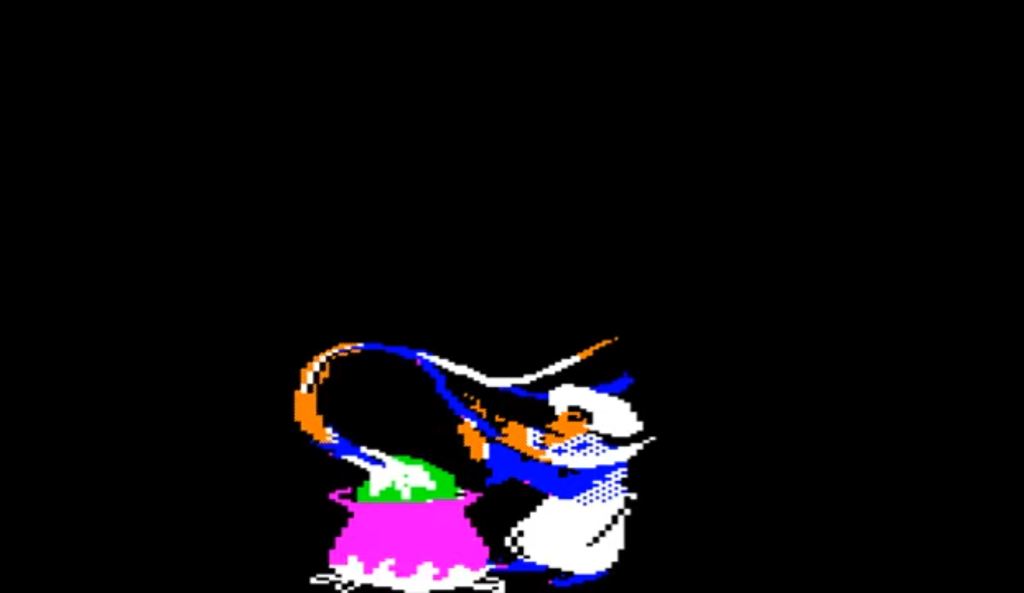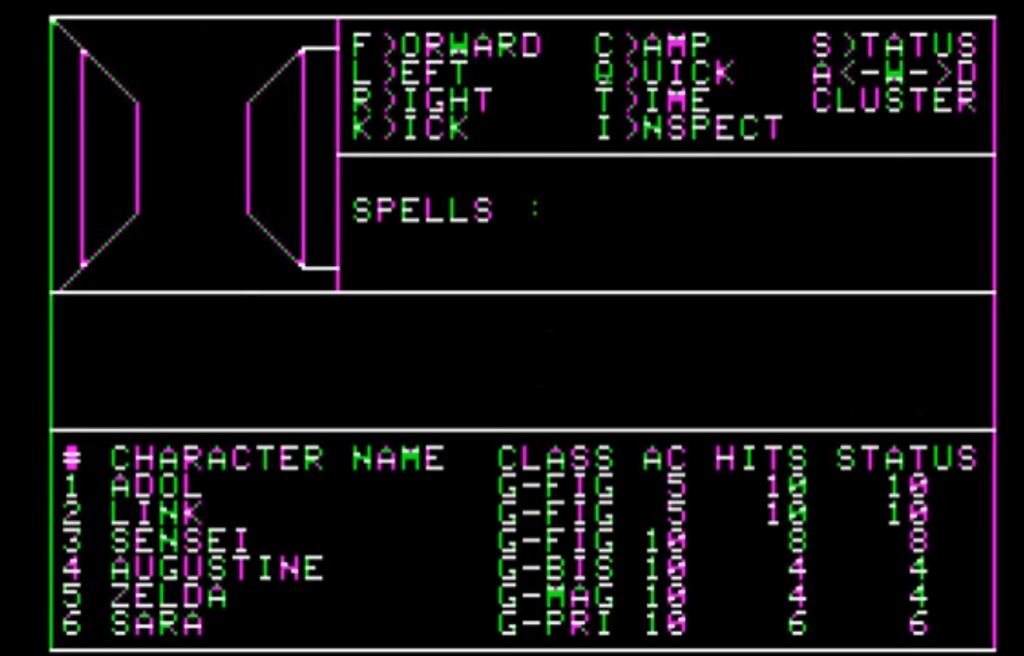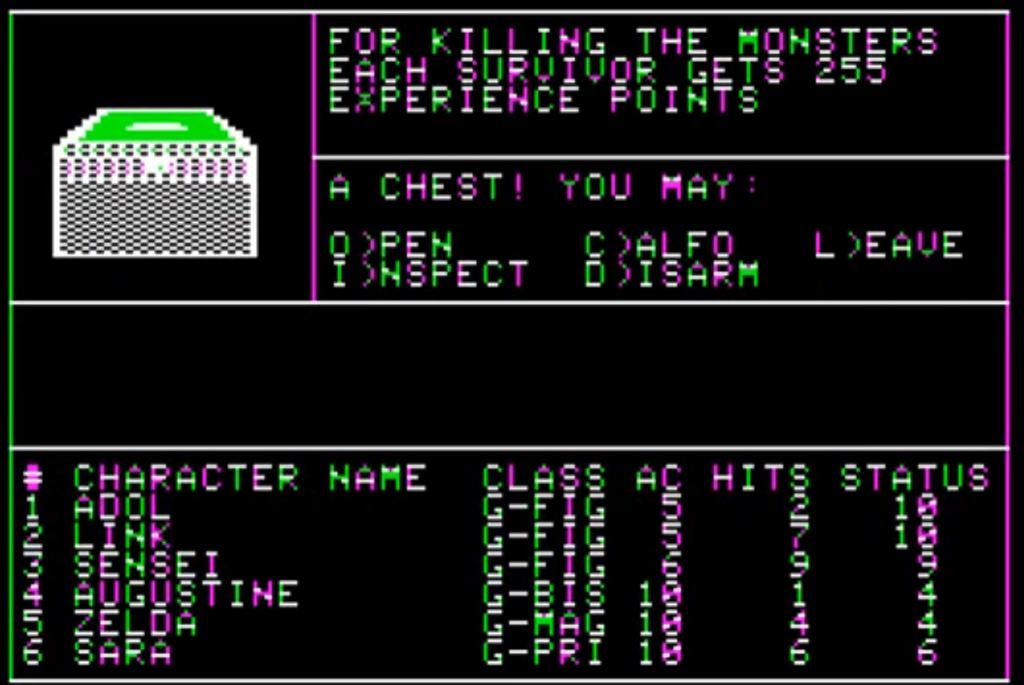How Wizardry’s Forgotten Innovations Shaped the Modern RPG
You may not know the name "Wizardry," but you certainly know the many ways that sometimes forgotten franchise changed RPGs forever.

In 1981, Sir-Tech, the brainchild of the Sirotek brothers and engineer Robert Woodhead, released their first Wizardry game: Wizardry: Proving Grounds of the Mad Overlord. The original PC release looks archaic today, with its huge, but sparse, info boxes and empty wire-frame corridors. Updated ports for the NES and Super Famicom would add finer details and more color to the base experience, bringing the dungeons we crawled in those games to vibrant life. Subsequent Wizardry games would introduce further refinements, and, in some cases, sweeping changes.
Yet the original Wizardry games’ barebones style became the version that endured. When Japanese publisher ASCII brokered a deal with Sir-Tech to import Wizardry, they both prolonged the longevity of the franchise and helped ensure that it reached a wider audience. Now there are over 35+ Wizardry titles that have never officially reached US shores, and the number of direct descendants of Wizardry’s sparse, but addictive, style is nearly unaccountable. Series like Etrian Odyssey and Elminage practically owe their existence to Wizardry.
However, those direct descendants aren’t the only legacy those classic Wizardry games leave behind. Their innovations live on in games that you might not expect (and some that you probably did). Get your grid paper out, and let’s explore the many ways that Wizardry changed role-playing video games forever.

Wizardry Emphsized Job Classes For Fun and Profit
Wizardry gave players a sense of agency when creating their party. A team of six heroes also demands a well-rounded skill set, which required the player to balance the game’s four basic job classes (Fighter, Thief, Priest, Mage) and think ahead about their advanced jobs. You could even reclass a character entirely, although doing so incurred harsh stat penalties in the early games.
It’s a digital upgrade from Dungeons & Dragons, which allowed human characters to eventually dual-class into another role as early as its first edition. Both set-ups demand a heavy investment, but players looking to overcome the toughest challenges will eventually enjoy the payoff.
Such job systems became the basis for countless party-based RPGs to come. The creator of Dragon Quest, Yuji Horii, was one of the first notable names to use his love for Wizardry to realize his own gaming vision in 1986. The original Dragon Quest only featured one party member, the descendant of the legendary Erdrick, but by the third game in the series, Horii fully adopted Wizardry’s recruitment gimmick. In that game, players were not only building their own party from scratch; they could journey to the temple of Dhama and use re-classing to further customize their skills. Today, similar systems can be found in all manners of RPGs.
Even 1987’s Final Fantasy borrowed from the Wizardry party system by allowing you to shape your four heroes and advance their classes after finding Bahamut. Final Fantasy V utilized a more complex job class system that featured an astounding 22 jobs that our heroes could switch in and out of at will. Today, similar systems are what keep blockbuster MMOs like Final Fantasy XIV as addictive as they are. Even as Square-Enix pivots to more action-heavy JRPGs, the hybrid job combos and slow pace of the Bravely Default franchise help keep that Wizardry style resonating with the company’s fans.

Wizardry Evolved the Standard RPG Combat Interface
Wizardry found a way to give their players as much information as possible in an era where every pixel was precious real estate. Key character stats filled up the bottom third of the screen, while the wireframe corridor at the center of the screen depicted whatever monsters you were fighting. Above everything was some enemy information or a set of field options. Combat options would appear as needed, with sub-menus laying all your possible tactics out.
It’s a design so sleek that the Dragon Quest series has yet to move away from it. Dragon Quest even kept the same static portrait and monster style until the franchise’s sixth major entry in 1995. The more modern entries in the franchise are more visually dynamic to be sure, but even they retain the core of the original display thanks to staples like the “Fight/Run/Item” option kit. That series’ remakes typically offer the classic style as an option, with Dragon Quest XI going all in on its joyful retro mode option.
While the Final Fantasy franchise has played with gimmicks like active time battle systems, the series has historically had a hard time moving completely away from that Wizardry-styled HUD. Even modern, more action-packed Final Fantasy games like Stranger of Paradise utilize elements of that UI. Meanwhile, Square Enix’s Octopath Traveler embraces a classic display, making the game a treat to navigate.
Ultimately, it’s hard to improve on Wizardry’s UI, and, once you notice it, you’ll see it everywhere. Go play a Pokémon game and you’ll see the Wizardry DNA in its various. Many great indie games (like Monster Sanctuary) even manage to utilize that old (yet familiar and simple) style while incorporating modern tweaks.

Wizardry’s Innovative Traps Laid the Groundwork for Some of the Cruelest Soulsborne Tricks
Ah, the Selia Crystal Tunnels of Elden Ring. We’ve all been there at least once, and our first visit was probably not by choice. We were minding our business, hoping Agheel the dragon doesn’t roast our already-Tarnished chestnuts or gathering loot in the hopes of finding something to make the early game a little easier. All of a sudden, we opened the wrong chest and were surrounded by creepy centipede dudes sniping at us like it’s a ranked Call of Duty match. Cool.
You can thank Wizardry, and, by extension, Dungeons & Dragons for such unforgettable experiences. Mimics have been haunting players since the 1977 D&D Monster Manual invited them to wreck parties, turning treasure chests into overpowered bastards. Wizardry turned those same creatures into digital nightmares, giving them a perfect home in video games as both insensate traps and monsters sent out to deny you your hard-earned loot.
Proving Grounds of the Mad Overlord actually “trapped” the majority of its enemy-dropped loot chests. If your attempt to disarm those chests failed, a variety of bad things could happen (from taking heavy damage to ingesting deadly poison). Much like Elden Ring, Wizardry also included teleportation traps that could put your heroes in tough situations. While you usually end up on the same floor, they could also send you to a higher-leveled section located on a part of the map that you weren’t supposed to get to yet. If you don’t have a Mage with the Level 7 Malor spell to teleport you back out…well, I hope you saved your game.

Wizardry’s Minimalist, Choose Your Own Adventure Narrative Set the Stage for the Choice-Based RPG
While Wizardry offered a straightforward plot (and even an overarching storyline) in its earliest entries, it didn’t belabor the basic storytelling process. An evil wizard steals a MacGuffin, and it’s your job to kill him and get it back. Lore was minimal, partially because disc space and memory were at a premium. Most of your clues to what this world was like came through brief character interactions and changes in the dungeon that were revealed as you over deeper into its depths.
Your true task in Wizardry was to map an unknown world and piece together the real elements of the story as you went along. Soon, the game’s world became your world (all without the need to organize a schedule with your neighborhood Dungeon Master).
That scarcity of information also let Wizardry get away with some wild twists that added to the intrigue. In the first game, there were hints of things too advanced to be magic, with an elevator that led to a testing ground, complete with mechanical klaxons that went off as soon as you arrived. By the time we got to Wizardy 8, the series further embraced such sci-fi oddities, with the Savant Tower glorying in its advanced technology and sending android enemies at you. For as wild as it was, it all fit a world where the unexpected became the norm.
That approach (along with the constant risk of total party kills and permanent death) helped keep players personally invested in what could initially appear to be an empty world. Similar approaches worked well for games like Etrian Odyssey, and that minimalist storytelling strategy helps FromSoftware’s rock-hard games maintain their fan-favorite status. Players love piecing together the jigsaw puzzle lore of the kingdoms of Boletaria, Lordran, Yharnam, and the Lands Between. Tantalizing clues are left by ruined landscapes and item descriptions, and the occasional cryptic conversation helps put some flesh on the old bones.

Wizardry’s Slimes Helped Give RPGs the Mascot They Needed
It’s not all hardcore murder and mayhem in the dungeon. Wizardry also helped create an adorable icon for JRPG fans and merch collectors: the slime.
Dragon Quest creator Yuji Horii loved playing Wizardry so much that he sketched one of its wiggly slimes and trotted it over to his character designer Akira Toriyama. Since then, the humble slime is almost always the first enemy you’ll encounter in a new Dragon Quest game. Shaped like a round-bottomed Hershey’s Kiss, the typical blue slime is found everywhere from gacha plushies to special edition controllers. There’s even a bronze statue of a slime in Sumoto (Yuji Horii’s hometown). Today, there are dozens of variants of this little guy, each cuter than the last. That includes the infamously slippery metal slimes, which sadly must be beaten to death on sight. You know, for the good of the party.
The original Wizardry slime isn’t much by comparison, nor have any of the game’s other classic critters achieved much prominence. Actually, that series’ slime is a low-level annoyance, and, depending on which version you’re playing, it’s not much to look at, either. Yet those humble beginnings led to one of the most famous video game mascots in history. At a time when new audiences were daring to venture into the complicated world of video game RPGs, those slimes served as the perfect introduction to epic adventures to come. Even if the classic dungeon crawler finally goes out of style (may that day never game), Toriyama’s squishy slimes will surely endure.
